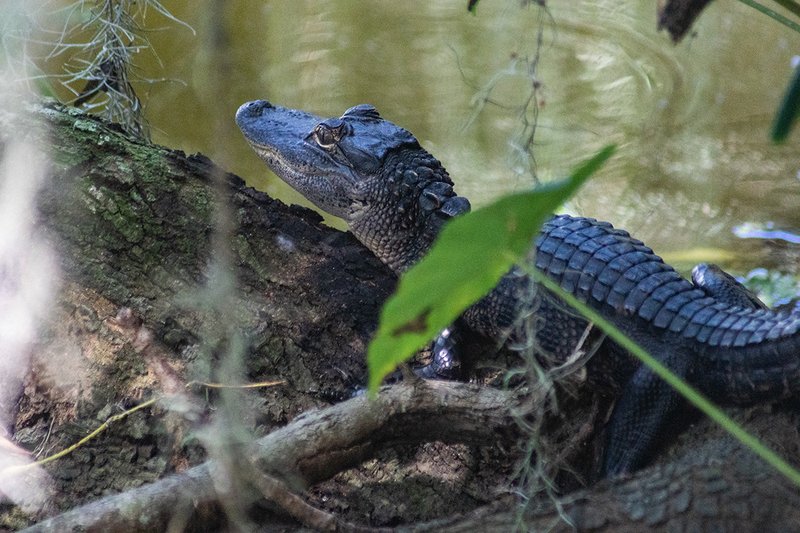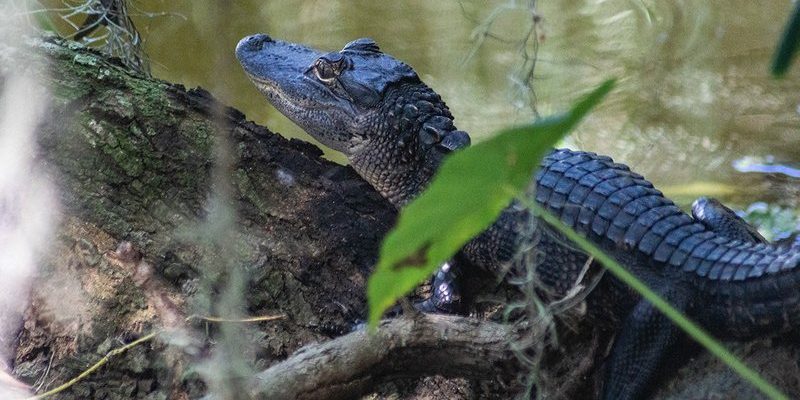
You might be surprised to learn that alligators have survived for over 200 million years. That’s right! They’ve outlasted the dinosaurs, and their ability to adapt to changing environments is one reason why. Think of them as nature’s ultimate survivalists, equipped with traits that allow them to not just live but thrive in diverse habitats. From their incredible senses to their unique body structures, each adaptation will show you just how remarkable these creatures really are.
1. Powerful Jaws and Sharp Teeth
One of the most striking features of alligators is their *powerful jaws*. These jaws allow them to capture and hold onto prey with incredible force. Did you know that an adult alligator can exert a bite force of over 2,000 pounds per square inch? That’s stronger than a great white shark! This immense strength is essential for catching larger animals, like fish, birds, and even the occasional deer that wanders too close to the water.
But it’s not just about strength; it’s also about technique. Alligators have 80 sharp teeth at any given time, perfectly designed for grabbing and holding onto slippery prey. When they bite down, their teeth grip like a vice, making it hard for their dinner to escape. This is vital, especially in swampy areas where quick movements can mean the difference between a successful hunt and a missed meal.
2. Camouflage and Stealth
Have you ever watched an alligator lying still in the water, barely visible to the casual observer? Their *camouflaged skin* plays a huge role in their hunting strategy. The dark green and brown colors blend beautifully with the water and algae, making them nearly invisible to both prey and potential threats.
When they hunt, alligators will often lie in wait, perfectly still, until the moment is just right to strike. This patience is akin to a well-timed chess move—waiting for that perfect opportunity to capitalize on. The combination of their coloring and behavior means that they can get incredibly close to their prey without being noticed. This adaptation not only aids in hunting but also helps them evade larger predators, securing their spot on the food chain.
3. A Unique Respiratory System
You might be wondering how alligators can stay underwater for long periods while hunting. The secret lies in their *unique respiratory system*. Alligators can hold their breath for up to two hours! This ability allows them to remain submerged, waiting for just the right moment to surface and attack.
Their lungs are designed to efficiently exchange oxygen, and they can close their ears and nostrils to keep water out. This feature is particularly handy during hunts, as they can sneak up on prey without disturbing the water’s surface. Just picture an alligator gliding through the water like a stealthy submarine—silent and deadly.
4. Cold-Blooded Adaptability
Being *cold-blooded* might seem like a disadvantage, but for alligators, it’s a survival superpower. Their body temperature is regulated by the surrounding environment, which means they don’t need to eat as often as warm-blooded animals. This ability allows them to survive longer periods without food, especially during colder months when prey is scarce.
When temperatures drop, alligators go into a state of brumation, which is similar to hibernation. They become less active and conserve energy, helping them make it through tough winter conditions. Think of it like switching to battery-saving mode on your phone—it helps you stretch your resources when times get tough.
5. Versatile Diet
Alligators are *opportunistic eaters*, which means they’ll eat just about anything they can catch. This flexibility in diet is another key factor in their survival. Their typical menu includes fish, birds, small mammals, and even carrion.
This adaptability helps them thrive in various environments. For instance, when fish are plentiful, an alligator will primarily focus on catching them. But when times are tough, they won’t hesitate to munch on whatever they can find—whether it’s a turtle or a piece of rotting meat. It’s like having an all-you-can-eat buffet available at all times, ensuring they won’t go hungry.
6. Reproductive Strategy
Alligators also have a fascinating reproductive strategy that ensures the survival of their species. During the nesting season, females build large mounds of vegetation where they lay their eggs. The decaying plant matter generates heat, keeping the eggs warm until they hatch.
This natural incubator is a smart way to protect the eggs from predators while ensuring the young alligators have a warm environment to develop in. Once the eggs hatch, the mother is incredibly protective, guiding her young to the water and keeping them safe from danger. It’s a perfect example of how alligators combine instinct and environmental knowledge to enhance their survival.
7. Social Behavior and Communication
You might not consider alligators to be social creatures, but they have their own forms of communication. They use a range of sounds, body language, and even movements in the water to express themselves. For instance, when feeling threatened, an alligator might perform a “water dance,” splashing and thrashing to warn off intruders.
This social behavior isn’t just for show—it helps maintain territories and establish hierarchies within groups. By communicating effectively, alligators can avoid unnecessary conflicts, ensuring their survival in a competitive environment. Imagine it like a well-coordinated team, each member knowing their role and how to interact with one another.
8. Resilience to Environmental Change
Lastly, one of the most impressive adaptations of alligators is their *resilience to environmental change*. They can thrive in freshwater and saltwater environments, making them incredibly versatile. Their presence in wetlands, swamps, and rivers showcases their ability to adapt and find food and shelter, no matter what the landscape looks like.
Despite facing challenges such as habitat loss and pollution, alligators have proven to be tough survivors. Their ability to navigate changing conditions and maintain populations speaks volumes about their adaptability. It’s almost like they’re nature’s own version of a tough, all-weather jacket—able to face diverse conditions and still come out on top.
In conclusion, alligators are not just ferocious hunters; they are incredible survivors. Their adaptations, from powerful jaws to a unique respiratory system, showcase how they’ve thrived in various environments for millions of years. Understanding these traits not only helps us appreciate these ancient reptiles but also highlights the remarkable ways in which life evolves to overcome challenges. So next time you see an alligator, remember—it’s not just a creature of the water; it’s a testament to the power of adaptation and survival.

